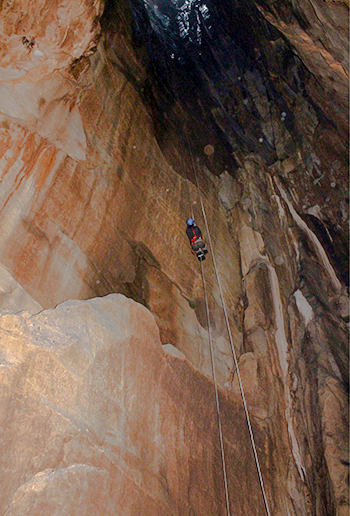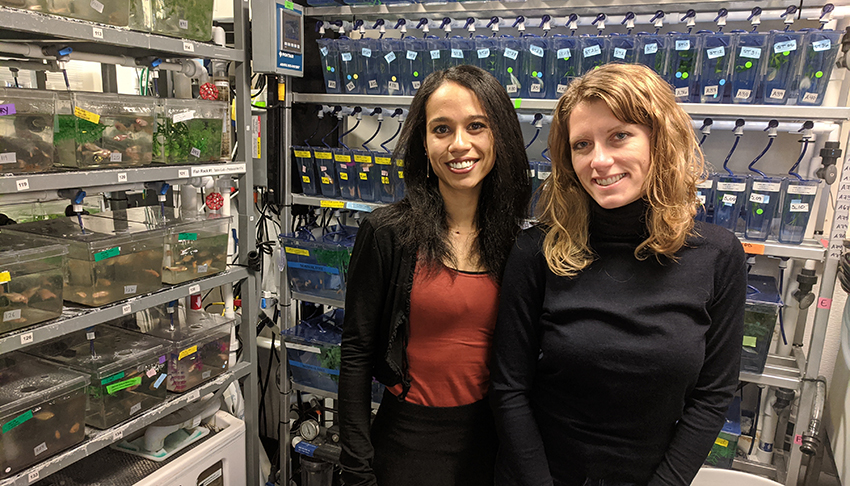
Hundreds of thousands of years ago, some small fish happily living in rivers in northeastern Mexico swam or were swept into nearby caves and couldn’t escape.
In these dramatically different environments of total darkness and almost no food, the fish confronted two possible fates: adapt or die.
They adapted.
Unlike other kinds of fish that perished in the caves over the centuries, what are today known as Mexican cavefish gained and lost an array of genetic traits that allowed them to survive the harsh new conditions.
Researchers in the lab of Cliff Tabin, the George Jacob and Jacqueline Hazel Leder Professor of Genetics, in the Blavatnik Institute at Harvard Medical School had been studying cavefish DNA for years to learn more about evolution and human disease. For instance, the way the fish adapted to store fat during months of famine offers insights into metabolic disorders such as diabetes.
Lab members Misty Riddle and Carole Hyacinthe saw an additional opportunity. These fish, the postdoctoral fellows realized, had weathered the equivalent of sudden climate change.
Maybe cavefish genomes could also help scientists understand what makes certain species more resilient to changing climates.
Maybe experts could use that information to prevent extinctions or provide survival advantages to animals raised for food.
Riddle and Hyacinthe submitted a proposal to a climate change-focused competition that the HMS Department of Genetics ran just before the COVID-19 pandemic struck. They were named finalists, receiving $100,000.
“Climate change is dramatically thrusting species into conditions they’ve never faced before. Rates of extinction are skyrocketing,” said Riddle. “We have the opportunity to ask cavefish which genetic changes could help some species survive.”
At home and abroad
The project includes experiments in the lab as well as data gathering in the fish’s native habitats.

As soon as COVID-19 travel bans ease, the team will install probes in three caves and two rivers where cavefish and their surface-dwelling cousins live, respectively. The probes will continuously measure five aquatic characteristics at each site for one year: temperature, pH, electrical conductivity, amount of dissolved oxygen, and water levels.
The readings should illuminate how the subterranean and sunlit habitats differ and reveal in greater detail what conditions the cavefish have adapted to.
“This is the first time we will gather environmental data over a long period in the wild, across the dry and rainy seasons that shape these fish’s lives,” said Hyacinthe, research fellow in genetics at HMS. “The data will be powerful in supporting or challenging what we and other members of the cavefish community observe in the lab.”
Back home, the researchers have been interbreeding the cave- and river-dwelling fish, observing the hybrid “children’s” and “grandchildren’s” physical traits and behavior, and mapping those to specific genetic variants.
Hyacinthe focuses on temperature preference. She modified a tank that provides warmer, river-like temperatures on one end and colder, cave-like temperatures on the other, with a defined gradient in between. By tracking where cavefish, river fish, and different hybrids choose to hang out, she’s trying to pin down genes that help the fish tolerate cold or warm water.
“This could teach us how organisms handle one aspect of the collateral damage of global warming,” Hyacinthe said.
Riddle, who now studies cavefish as an assistant professor at the University of Nevada, Reno, is particularly interested in how cavefish pack on so much fat when they subsist on little more than bat guano and whatever detritus flows into the caves during annual floods.
“They basically eat mud and turn it into energy,” she said. “It would be useful to uncover how their metabolism changed at the genetic level to allow them to do that.”

The results from Riddle’s and Hyacinthe’s work could help fish farmers identify stocks that can withstand low nutrients or changing temperatures—or potentially breed or engineer species to be more robust to these climate-related challenges, Riddle said.
“Cavefish genetics could tell us how to produce animals for food with fewer resources, which is something we face as climate change progresses,” she said.
Fishing for change
Along the way, the team is investigating which aspects of cavefish biology are most affected by changes in temperature, from immune responses to reproduction to metabolism.
Comparing their findings to those in other fish and non-fish could help scientists identify genetic variants that make creatures around the world genetically more resilient to climate change. Riddle and Hyacinthe hope their findings can eventually be used to help vulnerable organisms.
“Being able to predict how ecosystems will change and which species will survive could help us with better land management practices,” said Riddle.
The hurdle then becomes transforming knowledge into action. Changing behavior is not easy, but scientists have both the responsibility and the power to help, said Riddle and Hyacinthe, such as by raising awareness and partnering with policy makers.
“We must understand how species adapt to their natural environments while we still have time to understand,” said Hyacinthe. “Then we must pass the baton to the next runners in the relay.”



